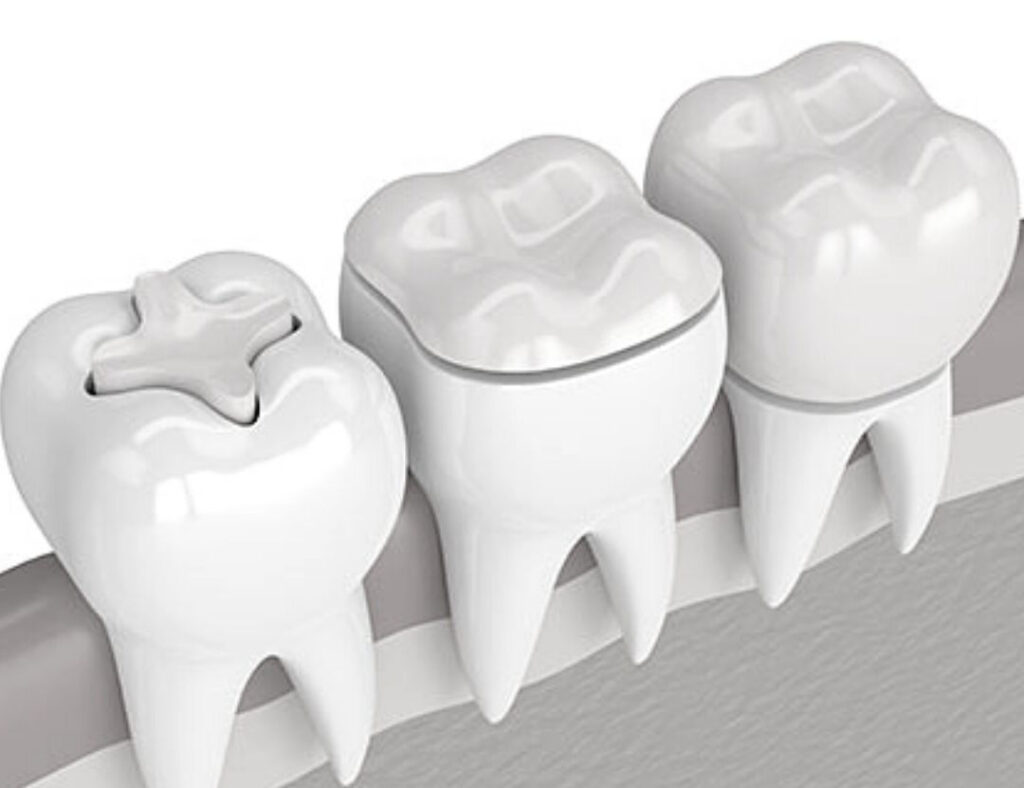Inlays and Onlays
An inlay is a small filling that fits into the biting surface of a tooth while an onlay covers a larger area of the tooth and is better suited to bigger cavities. For many years, gold has been used to make inlays and onlays because it is a hard material and lasts for a long time. Nowadays, tooth-coloured porcelain is also used and gives the restored tooth a more natural look, which many patients prefer.
Inlays and onlays can be made in a dental laboratory by a technician, with the help of impressions taken of your teeth. While these are being made, you will wear a temporary filling. When your inlay or onlay is ready your dentist will glue it into place using a special adhesive, after removing the temporary filling.
This is carried out over two appointments, the first of which is to prepare the tooth, take impressions and place a temporary inlay. At the second appointment the permanent porcelain Inlay or onlay is bonded to the tooth.

Frequently Asked Questions
What are the indications for inlays and onlays?
Inlays/onlays are indicated when teeth are weakened and extensively restored. There are no obvious contrast between the two. Inlays are usually indicated when there has been repeated breach in the integrity of a direct filling as metal inlays are more superior in strength.
How long do inlays and onlays last?
On average, these restorations will not need replacing for 10-15 years. Following oral health advice can help prolong the life of your restorations and preserve your oral health.
Are inlays and onlays fillings?
Inlay is used when the cavity is too large for simple filling. Inlay is created as a single solid piece to fill the cavity. It is cemented on tooth. Onlay is more than Inlay and less than Crown.
Is an inlay better than a filling?
They are often more durable and so can be better for chewing. Inlays also have a lower rate of failing over time than fillings. Traditional fillings are typically the recommended option for minor caries. The process is quick and effective, can be completed in one visit and preserves as much tooth as possible.
Can onlays last forever?
Onlays usually last between 10 to 15 years. Similar to many other dental restorations, onlays do not last a lifetime and may eventually need to be replaced. However, they are very durable and long-lasting, providing you with a beautiful smile.
